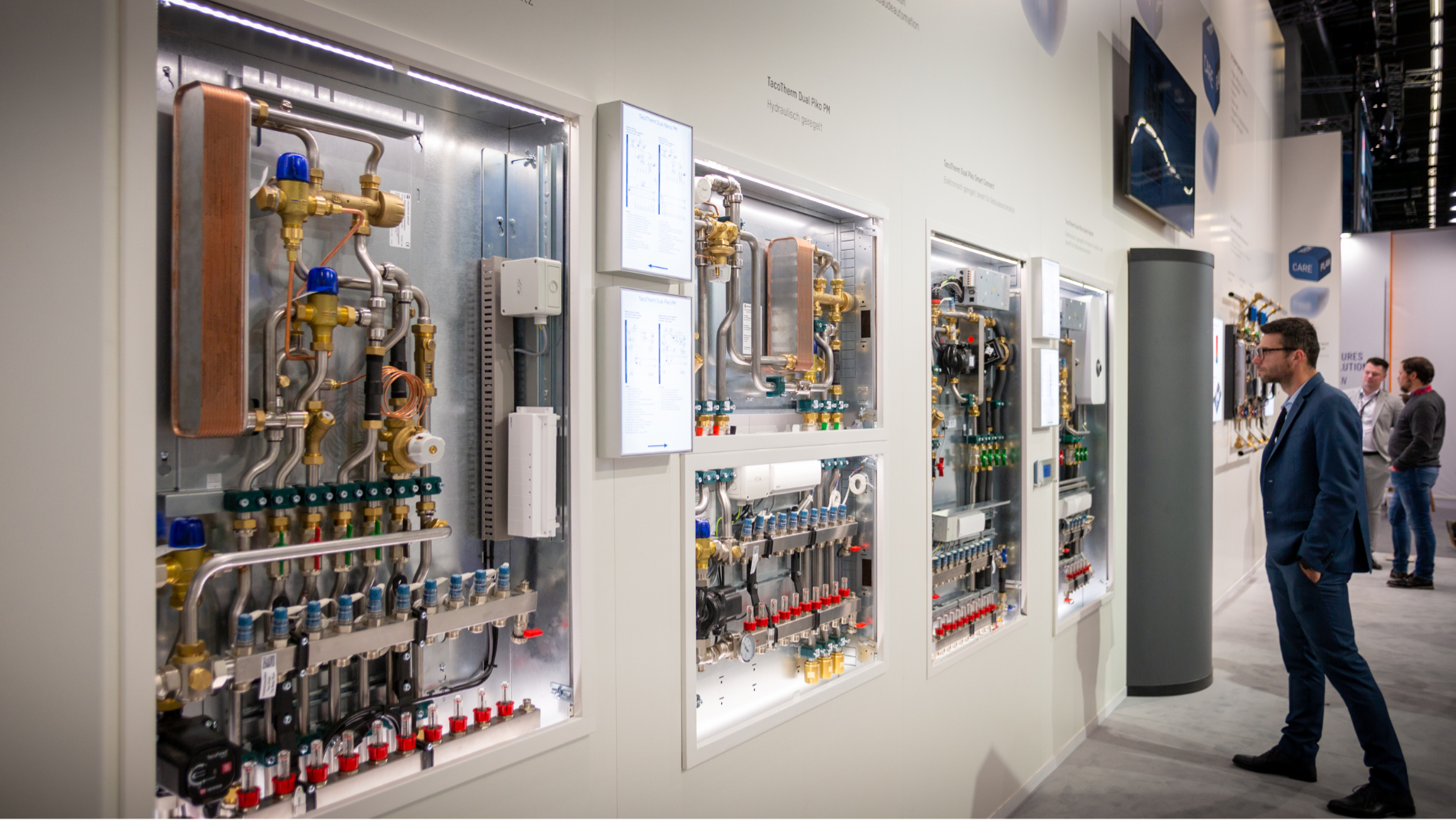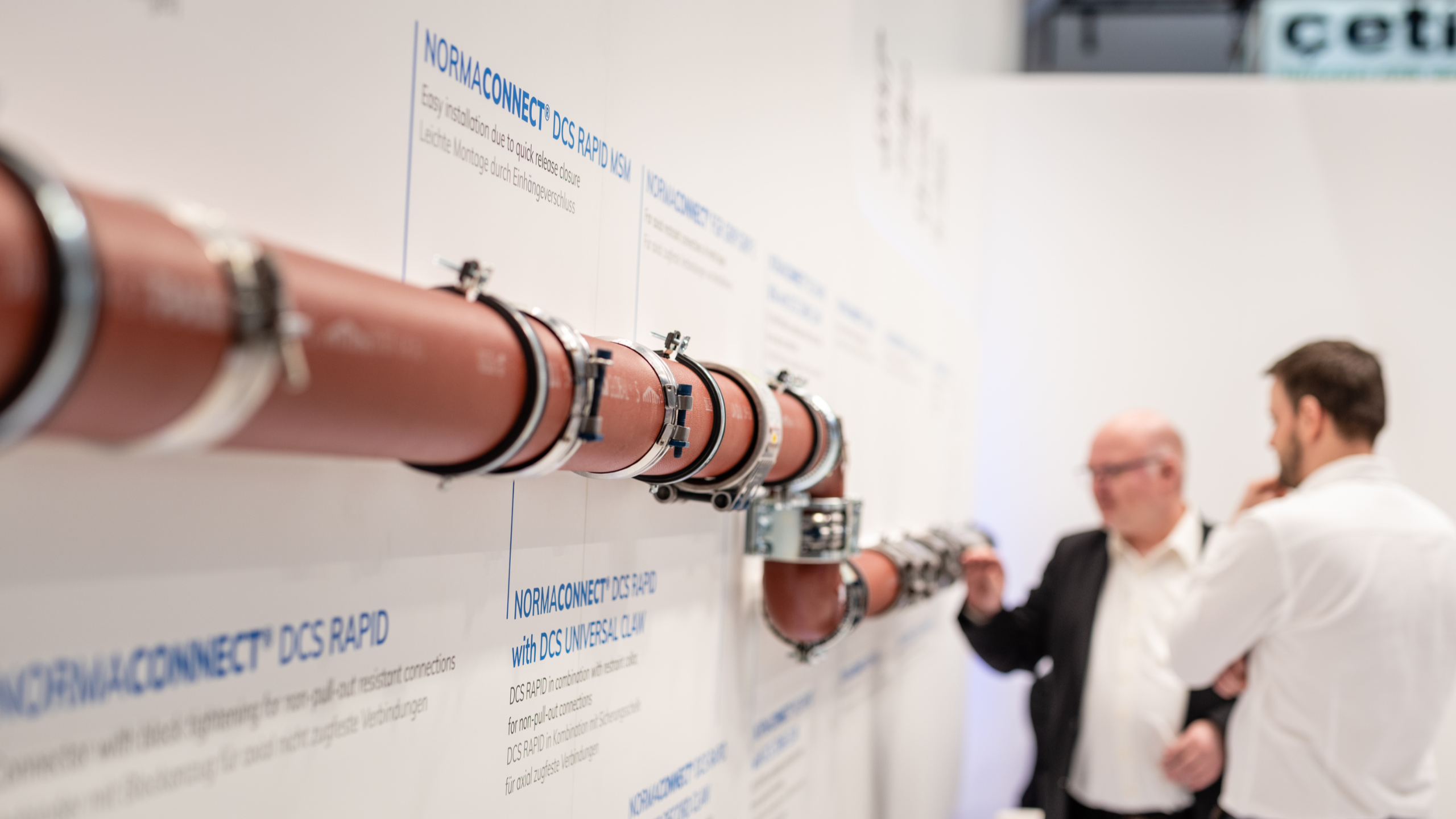Using water for the heating

The energy efficiency of the heating circuit plays a crucial role in reducing both heating costs and CO2 emissions. At the ISH trade fair, visitors have the opportunity to examine state-of-the-art components, water-bearing systems and processes for optimising heating circuits and modernising heat supply.
Heating circuits 1 and 2: structure and differences
Heating circuit 1 (primary circuit) and heating circuit 2 (secondary circuit) differ in terms of their function and application:
- The primary circuit is responsible for generating and transporting heat from the heat source to the heat exchanger. Heating circuit 1 often works at higher temperatures and pressures and includes components such as the heat generator and primary circulation pumps.
- The secondary circuit distributes the heat within the building via radiators or underfloor heating. Heating circuit 2 works at lower temperatures to ensure more efficient and comfortable heat output.
Separating the system into two heating circuits facilitates improved adaptation to different temperature requirements and increases the overall output of the heating system.
Key heating-circuit components
From the pump, via the pipework, to the valves and thermostats – all components of the heating circuit have a potential for greater efficiency and sustainability:
- Pumps ensure that the fluid used to transfer heat, water, is circulated in the heating system. High-efficiency pumps such as circulation pumps adjust their speed to meet demand, thus minimising energy consumption. The use of inverters for demand-led speed control also improves the energy efficiency of pumps.
- The material used for the pipes affects the flow resistance and thus the circulation of the heating water: multi-layer composite pipes are increasingly being used alongside metal and plastic pipes. Insulating the pipes is essential to prevent heat loss. Pre-insulated pipes and innovative insulation materials increase levels of energy efficiency.
- Modern radiators and underfloor heating systems ensure maximum heat output with low energy consumption. They use environmentally friendly materials and technologies such as 'Dynamic Boost Effect' (DBE) to increase heat output at the same time as reducing energy consumption. Dual-fuel and electric radiators, which can be combined with renewable energy sources such as solar energy or heat pumps, also help to reduce the ecological footprint.
- The latest generation of thermostatic valves regulate the flow of heating water according to demand and reduce energy consumption by about a third.
- Smart thermostats with WLAN or Bluetooth connectivity can be combined with other smart-home devices for intelligent energy management. This not only regulates heat output according to actual heating needs but also takes into account data on room use, absences, heating patterns and even weather forecasts.
Outdated or inefficient components are the main cause of energy loss in the heating circuit. Thus, in addition to the careful selection of components, regular maintenance and modernisation are essential. This includes water-pressure monitoring, regular bleeding of the heating system and an adequate supply of hot water.
Significant efficiency gains in the heating circuit can be achieved using modern technologies, as well as by optimising existing components and intelligent maintenance. Visitors to ISH 2025 will be able to see for themselves practical examples of such solutions.
